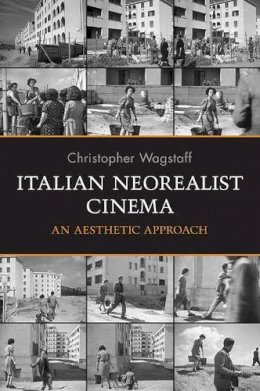
Italian Neorealist Cinema: An Aesthetic Approach
Christopher Wagstaff
The end of the Second World War saw the emergence of neorealist film in Italy. In Italian Neorealist Cinema, Christopher Wagstaff analyses three neorealist films that have had significant influence on filmmakers around the world. Wagstaff treats these films as assemblies of sounds and images rather than as representations of historical reality. If Roberto Rossellini's Roma città aperta and Paisà, and Vittorio De Sica's Ladri di biciclette are still, half a century after they were made, among the most highly valued artefacts in the history of cinema, Wagstaff suggests that this could be due to the aesthetic and rhetorical qualities ... Read more
This volume begins by situating neorealist cinema in its historical, industrial, commercial and cultural context, and makes available for the first time a large amount of data on post-war Italian cinema. Wagstaff offers a theoretical discussion of what it means to treat realist films as aesthetic artefacts before moving on to the core of the book, which consists of three studies of the films under discussion. Italian Neorealist Cinema not only offers readers in Film Studies and Italian Studies a radically new perspective on neorealist cinema and the Italian art cinema that followed it, but theorises and applies a method of close analysis of film texts for those interested in aesthetics and rhetoric, as well as cinema in general.
Show LessProduct Details
About Christopher Wagstaff
Reviews for Italian Neorealist Cinema: An Aesthetic Approach
